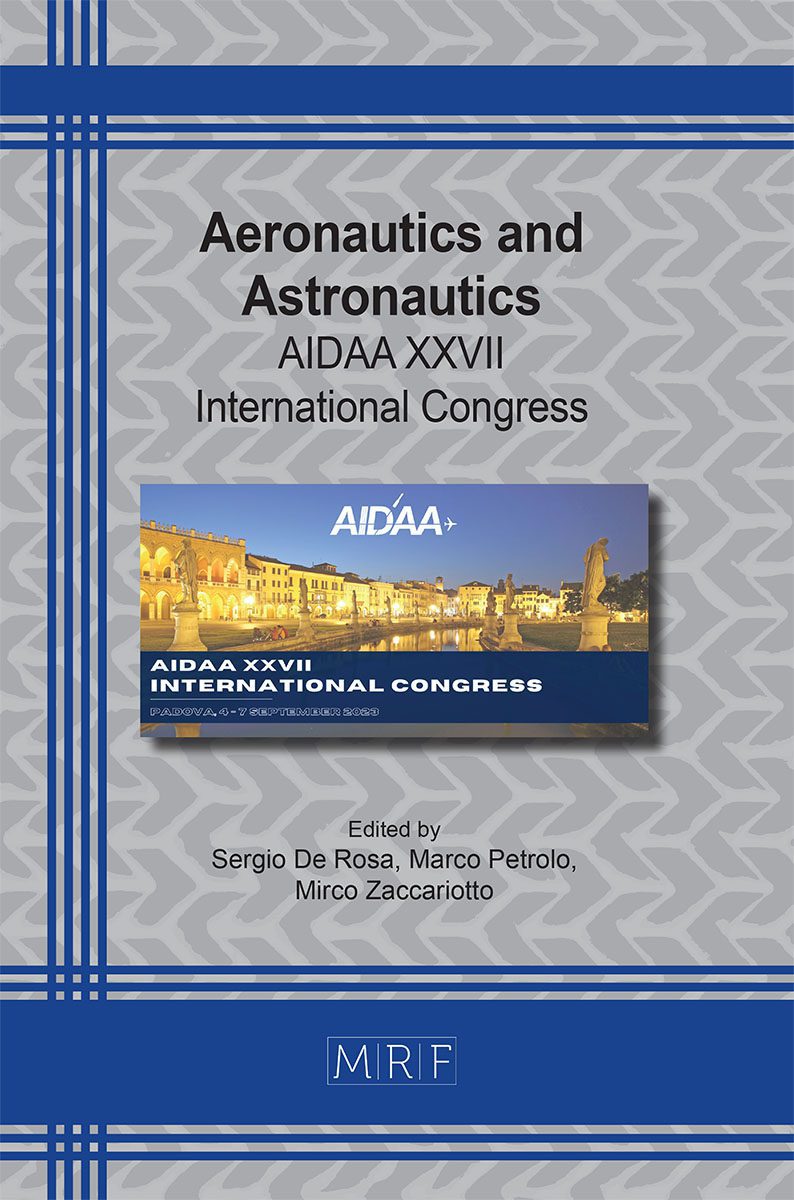Validation of a numerical strategy to simulate the expansion around a plug nozzle
Marco Daniel Gagliardi, Luca Fadigati, Nabil Souhair, Fabrizio Ponti
download PDFAbstract. Rocket engines currently use traditional bell-shaped nozzles that have a fixed area ratio and can only operate at maximum efficiency at a given altitude. Plug nozzles have been proposed as an alternative solution to achieve higher performance over a larger altitude range. Unlike bell nozzles, the flow is free to expand along the plug, as it is no longer surrounded by solid boundaries. Therefore, plug nozzles can adapt to different altitudes by expanding the flow to ambient pressure, resulting in continuous altitude adaptation. Due to the high surface area that needs to be cooled, one of the main challenges of plug nozzle design is thermal management. However, the introduction of aerospike geometry, which is essentially a truncated plug nozzle, has helped mitigate this issue. Simulating an aerospike engine is challenging due to the interaction between the plume and the external flow, which is necessary to accurately predict thrust. In this work, a numerical strategy for predicting the performance of an aerospike engine, during a static fire, was developed and validated.
Keywords
Aerospike Engine, Plug Nozzle, HLLC Scheme, Numerical Simulation, OpenFOAM
Published online 11/1/2023, 4 pages
Copyright © 2023 by the author(s)
Published under license by Materials Research Forum LLC., Millersville PA, USA
Citation: Marco Daniel Gagliardi, Luca Fadigati, Nabil Souhair, Fabrizio Ponti, Validation of a numerical strategy to simulate the expansion around a plug nozzle, Materials Research Proceedings, Vol. 37, pp 695-698, 2023
DOI: https://doi.org/10.21741/9781644902813-148
The article was published as article 148 of the book Aeronautics and Astronautics
![]() Content from this work may be used under the terms of the Creative Commons Attribution 3.0 license. Any further distribution of this work must maintain attribution to the author(s) and the title of the work, journal citation and DOI.
Content from this work may be used under the terms of the Creative Commons Attribution 3.0 license. Any further distribution of this work must maintain attribution to the author(s) and the title of the work, journal citation and DOI.
References
[1] Wang C-H, Liu Y, Qin L-Z (2009) Aerospike nozzle contour design and its performance validation. Acta Astronaut 64:1264–1275. https://doi.org/10.1016/j.actaastro.2008.01.045
[2] Sieder-Katzmann J, Propst M, Tajmar M, Bach C (2021) INVESTIGATION OF AERODYNAMIC THRUST-VECTOR CONTROL FOR AERO- SPIKE NOZZLES IN COLD-GAS EXPERIMENTS
[3] Schwarzer-Fischer E, Abel J, Sieder-Katzmann J, et al (2022) Study on CerAMfacturing of Novel Alumina Aerospike Nozzles by Lithography-Based Ceramic Vat Photopolymerization (CerAM VPP). Materials 15:3279. https://doi.org/10.3390/ma15093279
[4] Toro EF (2019) The HLLC Riemann solver. Shock Waves 29:1065–1082. https://doi.org/10.1007/s00193-019-00912-4
[5] Chandramouli S, Gojon R, Fridh J, Mihaescu M (2017) Numerical Characterization of Entropy Noise With a Density Based Solver
[6] Sod GA (1978) A survey of several finite difference methods for systems of nonlinear hyperbolic conservation laws. J Comput Phys 27:1–31. https://doi.org/10.1016/0021-9991(78)90023-2
[7] Delery J (1978) Analyse du décollement résultant d’un interaction choc-chouche limite turbulent en transsonique. La Recherche Aérospatiale 6:305–320
[8] Menter FR (1994) Two-equation eddy-viscosity turbulence models for engineering applications. AIAA Journal 32:1598–1605. https://doi.org/10.2514/3.12149
[9] Huang PG, Bradshaw P, Coakley TJ (1992) Assessment of closure coefficients for compressible-flow turbulence models. Ames Research Center, Moffett Field,California 94035-1000
[10] Chutkey K, Viji M, Verma SB (2017) Effect of clustering on linear plug nozzle flow field for overexpanded internal jet. Shock Waves 27:623–633. https://doi.org/10.1007/s00193-017-0707-y
[11] Soman S, Suryan A, Nair PP, Dong Kim H (2021) Numerical Analysis of Flowfield in Linear Plug Nozzle with Base Bleed. J Spacecr Rockets 58:1786–1798. https://doi.org/10.2514/1.A34992
































